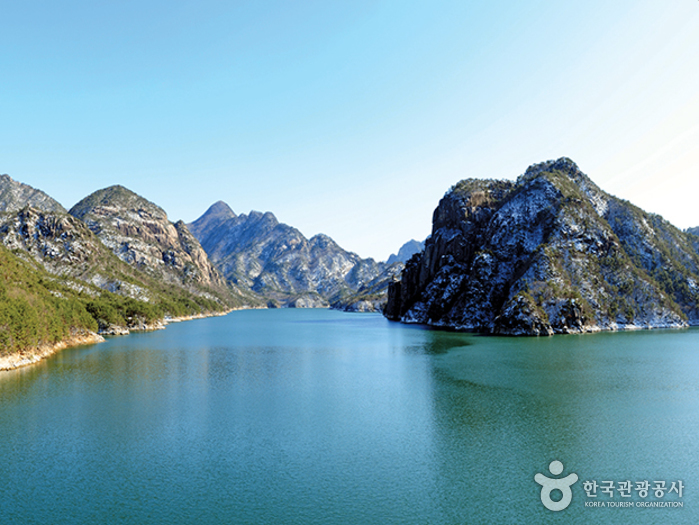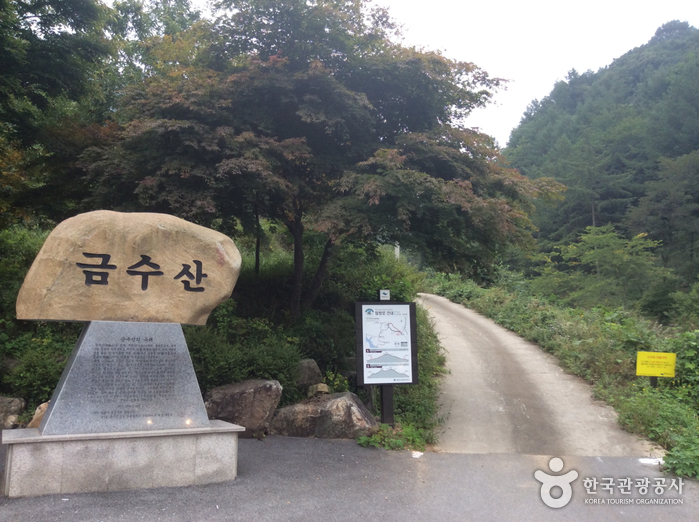Gudambong Peak & Oksunbong Peak (구담봉 & 옥순봉)
18.6 Km 42763 2020-06-11
Janghoe-ri, Danseong-myeon, Danyang-gun, Chungcheongbuk-do
+82-43-422-1146
Gudambong Peak and Oksunbong Peak (alt. 372m) are widely known as two of the “Eight Scenic Views of Danyang." Gudambong Peak (lit. Turtle Pond Peak) gets its name from the reflection of its rugged cliffs on the lake below, which is said to look like a turtle. Oksunbong Peak (lit. Bamboo Shoot Peak), well known for its magnificent scenery, was so named because its white and mossy rocks stand high like fresh bamboo shoots.
The historic book Yeojiseungnam (Geographical Survey of Korea) describes how Kim Il-son, a civil officer in the Joseon Dynasty, greatly extolled the beauty of its marvelous ravines. Both Gudambong Peak and Oksunbong Peak offer spectacular views of Chungjuho Lake and Geumsusan Mountain.
Geumsusan Mountain (금수산)
18.7 Km 38497 2021-05-28
210, Sanghak 1-gil, Danyang-gun, Chungcheongbuk-do
+82-43-653-3251
Geumsusan Mountain, originally called Baegamsan Mountain, was renamed by noted Joseon-period scholar Yi Hwang (pen name Toegye) when he was the chief governor of Danyang County, saying its graceful features matched the fineness of silk embroidery. The mountain is beautiful throughout the year with bright foliage in fall and an ice cave that stays frozen until early April. The view from the summit of the mountain resembles a pregnant woman lying on her side, and there is a legend that women who pray for a son here will have their wish come true.
Yeongju Modern History & Culture Street (영주근대역사문화거리)
19.0 Km 0 2024-02-23
Yeongju-dong, Yeongju-si, Gyeongsangbuk-do
Yeongju Modern History and Culture Street serves as a historical and cultural hub, encapsulating the life and times of early twentieth-century Yeongju. The street is dotted with cultural properties officially recognized by the Cultural Heritage Administration. Highlights include the preserved official residences No. 5 and No. 7 of Yeongju Station, once home to railway station employees. Additionally, visitors can explore the Pungguk Rice Mill, showcasing vintage rice milling machinery; Yeongju Jeil Church, a 1909-built structure exemplifying Gothic-style architecture; Yeongju-dong Modern Hanok, a subsidiary structure of an ancient residence; and the still-operating Yeonggwang Barber Shop, a testament to the area's enduring heritage.


 English
English
 한국어
한국어 日本語
日本語 中文(简体)
中文(简体) Deutsch
Deutsch Français
Français Español
Español Русский
Русский